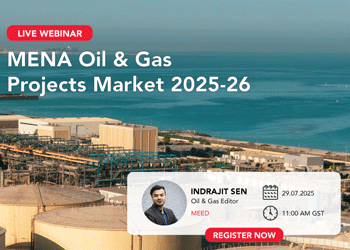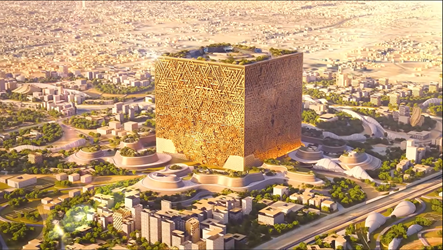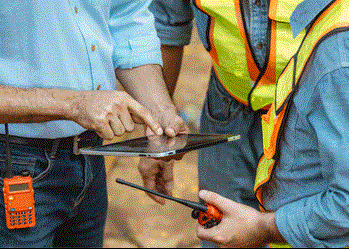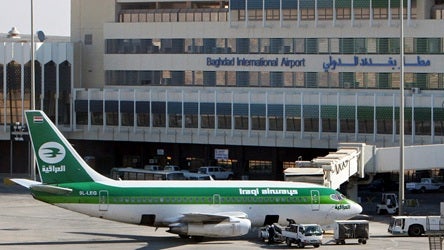Riyadh takes the diplomatic initiative
2 April 2025

Saudi Arabia has been at the centre of regional diplomatic activity through the early months of 2025, positioning itself as an intermediary in the Ukraine conflict and at the forefront of engagement with the new regime in Syria.
The role of regional mediator is one that has in recent years been more closely associated with Qatar – particularly in relation to the Gaza conflict – and, on occasion, Oman.
Riyadh’s decision to throw its weight behind diplomatic initiatives is part of what Abdulaziz Sager, chairman of the Saudi-based Gulf Research Centre, has described as a “bold multi-alignment strategy”, which seeks to balance Riyadh’s economic and security concerns and its regional leadership ambitions.
Multipronged initiatives
The kingdom has gained plaudits for its efforts to resolve the Ukraine war in particular. Following his talks with Crown Prince Mohammed Bin Salman (MBS) in Jeddah on 11 March, Ukraine’s President Volodymyr Zelenskyy said: “Saudi Arabia provides a crucial platform for diplomacy, and we appreciate this.”
Zelenskyy added that he had “a detailed discussion on the steps and conditions needed to end the war” with the crown prince.
The previous month, US secretary of state Marco Rubio had said Saudi Arabia had played an “indispensable role” in setting up bilateral negotiations between Moscow and Washington to discuss the conflict.
Russia’s President Vladamir Putin has also praised the Saudi leadership for providing a platform for high-level meetings with the US and “creating a very friendly atmosphere”.
 Whether all this leads to a lasting peace deal for Ukraine remains to be seen, but Saudi Arabia’s attitude to conflict may be coloured somewhat by its own experiences over the past decade in Yemen.
Whether all this leads to a lasting peace deal for Ukraine remains to be seen, but Saudi Arabia’s attitude to conflict may be coloured somewhat by its own experiences over the past decade in Yemen.
It is now 10 years since it launched a bombing campaign against Yemen’s Houthi rebels in March 2015, and the war has not gone as Riyadh had hoped, with the Houthis proving far more resilient than anticipated.
Saudi Arabia’s southern border has at least been relatively quiet since a truce took hold in 2022, but a comprehensive peace deal has proved elusive.
Riyadh has also been re-engaging in the Levant this year, in light of the new regime in Damascus.
The new Syrian president Ahmed Al-Sharaa travelled to Riyadh in early February, on his first trip abroad since taking power. Saudi Foreign Minister Prince Faisal Bin Farhan had been in Damascus a week earlier.
There are some key issues at stake for Riyadh. The regime of President Bashar Al-Assad had overseen the industrial-scale production of the amphetamine-type stimulant Captagon, much of which was smuggled into Saudi Arabia and other Gulf states. Saudi efforts to disrupt the trade – both at its borders and via lobbying of the Syrian authorities – had failed to stem the flow of drugs.
In addition, Hasan Alhasan, senior fellow for Middle East Policy at the International Institute for Strategic Studies, has pointed out that between 500,000 and 2.5 million de facto Syrian refugees are thought to be living in Saudi Arabia – a fact that gives Riyadh a clear interest in Syria’s stability, particularly if it wants to encourage them to return home.
“Saudi Arabia views the fall of the Assad regime as an opportunity to reassert its influence in the Levant,” he asserted in a recent commentary.
The ousting of Assad in late 2024 and the recent Israeli campaign against Hezbollah has also changed the situation on the ground in Lebanon, encouraging Saudi Arabia to reconsider its approach there too.
MBS hosted Lebanon’s recently elected President Joseph Aoun on 3 March. Following their meeting, Saudi Arabia said it would look again at allowing Lebanese exports to Saudi Arabia and letting its own citizens travel to Lebanon.
Manoeuvring around Trump
The Saudi diplomatic push may also be motivated by a desire to ensure that relations with Washington remain on a positive footing in the wake of Donald Trump’s re-election as US president.
At first, it appeared that the bilateral relations would follow a similar pattern to Trump’s first term.
In January, MBS said in a phone call with Trump that Saudi Arabia was planning to invest some $600bn in the US over the coming four years, which the US president suggested should probably be increased to $1tn. This echoed the signing of $460bn-worth of defence deals when Trump made Saudi Arabia his first foreign trip as president in May 2017.
Riyadh appears to have conceded to Trump’s higher figure, with the US president saying in early March: “I said I'll go if you pay $1tn to American companies, meaning the purchase over a four-year period of $1tn, and they've agreed to do that. So, I'm going to be going there.”
However, other aspects of the bilateral relationship are more difficult and less predictable. Trump had been pushing Saudi Arabia to join Bahrain, the UAE and Morocco in normalising relations with Israel, but in light of the war in Gaza and Trump’s own plans for the ethnic cleansing of Palestinians from the strip, that looks like a stretch too far.
Trump will nevertheless have been pleased by the decision by Saudi Arabia and the other members of the Opec+ bloc in early March to unwind some of the production restrictions they had voluntarily agreed.
From April onwards, the eight-strong group will start to bring 2.2 million barrels a day back onto the market over the course of 18 months. That fits in with Trump’s call in January, soon after taking office, for Riyadh and Opec to do more to help bring oil prices down.
However, that decision may also create fiscal challenges for the Saudi government, as any rise in production could be more than offset by lower prices.
Saudi Aramco has announced plans to trim its dividend payouts this year to $85.4bn – down from $124bn in 2024. These payments are a vital source of revenues both for the central government and for its Public Investment Fund (which holds a 16% stake in Aramco)
All that could force some public sector spending constraint in the kingdom, in a sign that balancing diplomacy and financial interests is not always straightforward.
MEED’s April 2025 report on Saudi Arabia includes:
> UPSTREAM: Saudi oil and gas spending to surpass 2024 level
> DOWNSTREAM: Aramco’s recalibrated chemical goals reflect realism
> POWER: Saudi power sector enters busiest year
> WATER: Saudi water contracts set another annual record
> CONSTRUCTION: Reprioritisation underpins Saudi construction
> TRANSPORT: Riyadh pushes ahead with infrastructure development
> BANKING: Saudi banks work to keep pace with credit expansion
Exclusive from Meed
-
 WEBINAR: Mena Oil & Gas Projects Market 2025-26
WEBINAR: Mena Oil & Gas Projects Market 2025-2610 July 2025
-

-
 Chinese firm wins Mid Island Parkway tunnelling deal
Chinese firm wins Mid Island Parkway tunnelling deal10 July 2025
-
 Iraq tenders Baghdad airport PPP project
Iraq tenders Baghdad airport PPP project9 July 2025
-

All of this is only 1% of what MEED.com has to offer
Subscribe now and unlock all the 153,671 articles on MEED.com
- All the latest news, data, and market intelligence across MENA at your fingerprints
- First-hand updates and inside information on projects, clients and competitors that matter to you
- 20 years' archive of information, data, and news for you to access at your convenience
- Strategize to succeed and minimise risks with timely analysis of current and future market trends

Related Articles
-
 WEBINAR: Mena Oil & Gas Projects Market 2025-26
WEBINAR: Mena Oil & Gas Projects Market 2025-2610 July 2025
Date & Time: Tuesday 29 July 2025 | 11:00 AM GST
Agenda:
1. Summary of the Mena oil, gas and petrochemicals projects market
2. Summary description of the main megaprojects, including project programmes
3. Analysis of active contracts and spending to date
4. Analysis of top contracts by work already awarded
5. Long-term capital expenditure outlays and forecasts
6. Highlights of key contracts to be tendered and awarded over the next 18 months
7. Top contractors and clients
8. Breakdown of spending by segment, ie, oil, gas, petrochemicals – upstream, downstream, onshore and offshore
9. Q&A session
https://image.digitalinsightresearch.in/uploads/NewsArticle/14241705/main.gif -
 New Murabba signs up South Korean firm for design works
New Murabba signs up South Korean firm for design works10 July 2025
Register for MEED’s 14-day trial access
Saudi Arabia’s New Murabba Development Company (NMDC) has signed a memorandum of understanding (MoU) with South Korea’s Heerim Architects & Planners to explore further design works on assets at the 14 square-kilometre New Murabba downtown project.
According to an official statement: “Heerim Architects & Planners will explore distinctive architectural plans that complement the development’s masterplan, with special focus on anchor assets, linear parks and smart city features.”
New Murabba CEO Michael Dyke signed the agreement last week during the company’s Investment and Partnership Forum in Seoul.
At the event, NMDC also signed an MoU with South Korea’s Naver Cloud Corporation to explore technological solutions for delivering the New Murabba downtown project.
According to an official statement: “The three-year agreement covers exploring innovative technology and automation to support the delivery of New Murabba, including robotics, autonomous vehicles, a smart city platform and digital solutions for monitoring construction progress.”
NMDC is in Seoul to examine technological offerings, assess financing options and showcase the investment opportunities available for the New Murabba downtown development.
The statement added that the excavation works for The Mukaab, the centrepiece of the overall development, have now been completed.
The Mukaab is a Najdi-inspired landmark that will be one of the largest buildings in the world. It will be 400 metres high, 400 metres wide and 400 metres long. Internally, it will have a tower on top of a spiral base and a structure featuring 2 million square metres (sq m) of floor space designated for hospitality. It will feature commercial spaces, cultural and tourist attractions, residential and hotel units, and recreational facilities.
Downtown destination
The New Murabba destination will have a total floor area of more than 25 million sq m and feature more than 104,000 residential units, 9,000 hotel rooms and over 980,000 sq m of retail space.
The scheme will include 1.4 million sq m of office space, 620,000 sq m of leisure facilities and 1.8 million sq m of space dedicated to community facilities.
The project will be developed around the concept of sustainability and will include green spaces and walking and cycling paths to promote active lifestyles and community activities.
The living, working and entertainment facilities will be developed within a 15-minute walking radius. The area will use an internal transport system and will be about a 20-minute drive from the airport.
The downtown area will feature a museum, a technology and design university, an immersive, multipurpose theatre, and more than 80 entertainment and cultural venues.
 READ THE JULY 2025 MEED BUSINESS REVIEW – click here to view PDF
READ THE JULY 2025 MEED BUSINESS REVIEW – click here to view PDFUAE and Turkiye expand business links; Renewed hope lies on the horizon for trouble-beset Levant region; Gulf real estate momentum continues even as concerns emerge
Distributed to senior decision-makers in the region and around the world, the July 2025 edition of MEED Business Review includes:
> AGENDA: UAE-Turkiye trade gains momentum> INTERVIEW 1: Building on UAE-Turkiye trade> INTERVIEW 2: Turkiye's Kalyon goes global> INTERVIEW 3: Strengthening UAE-Turkiye financial links> INTERVIEW 4: Turkish Airlines plans further growth> CURRENT AFFAIRS: Middle East tensions could reduce gas investments> GCC REAL ESTATE: Gulf real estate faces a more nuanced reality> PROJECTS MARKET: GCC projects market collapses> INTERVIEW 5: Hassan Allam eyes role in Saudi Arabia’s transformation> INTERVIEW 6: Aseer region seeks new investments for Saudi Arabia> LEADERSHIP: Nuclear power makes a global comeback> LEVANT MARKET FOCUS: Levant states wrestle regional pressures> GULF PROJECTS INDEX: Gulf projects index continues climb> CONTRACT AWARDS: Mena contract award activity remains subdued> ECONOMIC DATA: Data drives regional projects> OPINION: A farcical tragedy that no one can endTo see previous issues of MEED Business Review, please click herehttps://image.digitalinsightresearch.in/uploads/NewsArticle/14239016/main.jpg -
 Chinese firm wins Mid Island Parkway tunnelling deal
Chinese firm wins Mid Island Parkway tunnelling deal10 July 2025

Register for MEED’s 14-day trial access
Beijing-headquartered China Railway Tunnel Engineering Group has won a $60m subcontract for the tunnelling works on package 1B of the Mid Island Parkway project in Abu Dhabi.
Package 1B entails the construction of a cut-and-cover tunnel to cross the Khor Laffan Channel, which is the area between the Saadiyat and Um-Yifeenah islands.
The tunnel, which will be between 900 metres and 1 kilometre (km) long, is being constructed on a design-and-build basis and will tie in to packages 1A and 1C.
The project is being jointly constructed by a joint venture of local firm Yas Projects (Alpha Dhabi Holding) and Beijing-based China Railway International Group.
In June last year, MEED exclusively reported that Abu Dhabi's Department of Municipality & Transport had awarded contracts for three packages for phase one of the Mid Island Parkway Project (MIPP), as part of the Plan Capital urban evolution programme.
Phase one will start at the existing Saadiyat Interchange, which will connect the E12 road to the MIPP, and will end with the recently constructed Um-Yifeenah Highway.
It comprises a dual main road with a total length of 8km, including four traffic lanes in each direction, two interchanges, a tunnel and associated infrastructure works.
MIPP phase one is further divided into packages 1A, 1B and 1C, which were awarded separately.
The project ownership has been transferred from Aldar Properties to Abu Dhaibi's Department of Municipalities & Transport.
Previously, it was transferred from Abu Dhabi General Services Company (Musanada) to Aldar Properties, and the project was included in the Abu Dhabi Investment Office's public-private partnership project pipeline.
 READ THE JULY 2025 MEED BUSINESS REVIEW – click here to view PDF
READ THE JULY 2025 MEED BUSINESS REVIEW – click here to view PDFUAE and Turkiye expand business links; Renewed hope lies on the horizon for trouble-beset Levant region; Gulf real estate momentum continues even as concerns emerge
Distributed to senior decision-makers in the region and around the world, the July 2025 edition of MEED Business Review includes:
> AGENDA: UAE-Turkiye trade gains momentum> INTERVIEW 1: Building on UAE-Turkiye trade> INTERVIEW 2: Turkiye's Kalyon goes global> INTERVIEW 3: Strengthening UAE-Turkiye financial links> INTERVIEW 4: Turkish Airlines plans further growth> CURRENT AFFAIRS: Middle East tensions could reduce gas investments> GCC REAL ESTATE: Gulf real estate faces a more nuanced reality> PROJECTS MARKET: GCC projects market collapses> INTERVIEW 5: Hassan Allam eyes role in Saudi Arabia’s transformation> INTERVIEW 6: Aseer region seeks new investments for Saudi Arabia> LEADERSHIP: Nuclear power makes a global comeback> LEVANT MARKET FOCUS: Levant states wrestle regional pressures> GULF PROJECTS INDEX: Gulf projects index continues climb> CONTRACT AWARDS: Mena contract award activity remains subdued> ECONOMIC DATA: Data drives regional projects> OPINION: A farcical tragedy that no one can endTo see previous issues of MEED Business Review, please click herehttps://image.digitalinsightresearch.in/uploads/NewsArticle/14238039/main3047.gif -
 Iraq tenders Baghdad airport PPP project
Iraq tenders Baghdad airport PPP project9 July 2025
Register for MEED’s 14-day trial access
Iraq’s Ministry of Transport and the General Company for Airport & Air Navigation Services have released a tender inviting firms to bid for a contract to develop Baghdad International airport on a public-private partnership (PPP) basis.
The notice was issued in July, and the submission deadline is in September.
According to an official statement posted on its website, Iraq’s Ministry of Transport said that 10 out of 14 international consortiums that expressed interest in the project earlier this year have been prequalified to compete for the tender.
The scope of the estimated $400m-$600m project involves rehabilitating, expanding, financing, operating and maintaining the airport. It is the first airport PPP project to be launched in Iraq.
The initial capacity of the airport is expected to be around 9 million passengers, which will be gradually increased to 15 million passengers.
The International Finance Corporation (IFC), a member of the World Bank Group, is the project’s lead transaction adviser.
Iraq is already developing the Baghdad and Najaf-Karbala metro projects using a similar PPP model.
Earlier this month, MEED reported that Iraq intends to retender the contract to develop and operate the Baghdad Metro project, following the award of the estimated $2.5bn contract last year.
According to local media reports, Nasser Al-Assadi, adviser to Prime Minister Mohammed Sudani, stated that the previous developers had overestimated the project budget; therefore, the government will relaunch the entire process to implement the project.
https://image.digitalinsightresearch.in/uploads/NewsArticle/14229008/main.jpg -
 Contractors prepare revised bids for Roshn stadium
Contractors prepare revised bids for Roshn stadium9 July 2025

Register for MEED’s 14-day trial access
Saudi gigaproject developer Roshn has invited firms to submit revised commercial proposals by 24 July for a contract to build a new stadium adjacent to the National Guard facilities to the southwest of Riyadh.
Known as the National Guard Stadium, it will be delivered on an early contractor involvement (ECI) basis. It will cover an area of over 450,000 square metres and be able to accommodate 46,000 spectators.
The scope of work also covers the construction of auxiliary facilities, including training academy offices and two hotels, as well as retail and food and beverage outlets.
The firms had initially submitted bids on 8 April for the contract.
The stadium is scheduled to host 32 Fifa World Cup tournament games in 2034.
In August last year, MEED reported that Saudi Arabia plans to build 11 new stadiums as part of its bid to host the 2034 Fifa World Cup.
Eight stadiums will be located in Riyadh, four in Jeddah and one each in Al-Khobar, Abha and Neom.
The proposal outlines an additional 10 cities that will host training bases. These are Al-Baha, Jazan, Taif, Medina, Al-Ula, Umluj, Tabuk, Hail, Al-Ahsa and Buraidah.
The bid proposes 134 training sites across the kingdom, including 61 existing facilities and 73 new training venues.
The kingdom was officially selected to host the 2034 Fifa World Cup through an online convention of Fifa member associations at the Fifa congress on 11 December 2024.
 https://image.digitalinsightresearch.in/uploads/NewsArticle/14228507/main.jpg
https://image.digitalinsightresearch.in/uploads/NewsArticle/14228507/main.jpg

